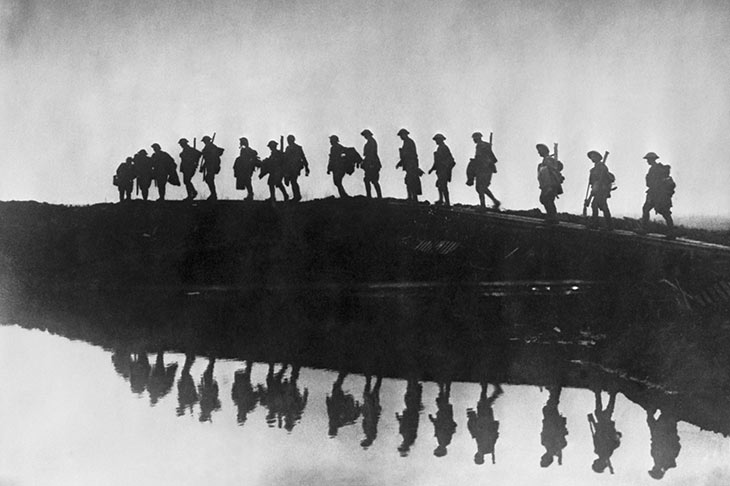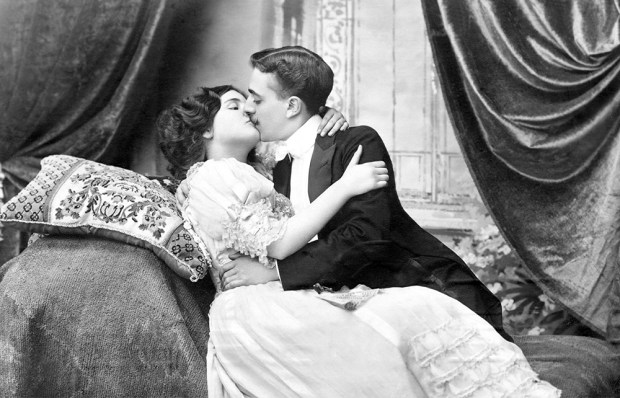Bernafay Wood B&B, Somme, France
I came up on the TGV yesterday from the Midi to northern France and it went like the clappers. I fell asleep zipping through stony, sun-baked vineyards and olive groves and woke an hour later in dairy country obscured by rain. What I had hoped for was an empty carriage or at least a socially distanced one, but this particular Sunday train was packed to the rafters. A woman behind me sneezed at my head from one end of France to the other. A bloke across the aisle was soaked in sweat, his head lolling this way and that on the bends and he looked as though he might have to be carried off the train. I went north to walk the Somme battlefield for nine days and think about my old Mum, who passed away last September. If my tour is curtailed by my own death from Covid-19, I can’t imagine a more illustrious resting place.
I was bitten by the first world war bug about three years ago. Thus far I’ve conscientiously stuck to reading about the events chronologically. I’m still on 1914: the clash of arms, the war of movement, the cavalry charges with bamboo lances, the officers waving infantry forward with swords, and the gradual annihilation of the British Expeditionary Force, the only professional army in the field. I’ve enjoyed 1914 so much that I am reluctant to move on to the grim static slog of 1915. But I have made a few guilty excursions into narratives of the Somme battle in 1916 and I’ve studied the battlefield maps. Furthermore my grandmother’s brother was blown up at the southern end of La Boisselle village on 9 July 1916 and lies under a white Portland headstone in Bécourt Military Cemetery, and I thought I would pay him a visit on the 104th anniversary.
But what made me abandon chronology and come to this 1916 battlefield first was the accident of noticing online a bed and breakfast in the old light railway station in Bernafay Wood, right next door to infamous Trones Wood and Guillemont Farm, and a short walk from the equally infamous Delville, High and Mametz Woods. It is small, chilly and far from luxurious, but perfectly located and terribly atmospheric. With Covid keeping the British away, I had stumbled on a rare vacancy.
All of those famous woods, including Bernafay, were flattened by shell fire. (About 30 million shells were fired by three national armies into seven square miles of the French countryside, killing and maiming around a million chaps.) Amazingly the countryside is fully recovered and looks roughly the same as it did before the battle — the same arable crops, the same farms and roads, the same small villages but entirely rebuilt in the vernacular. And the woods have regrown.
This morning, my first morning, as if in a dream, I walked before breakfast in Bernafay Wood in a riot of birdsong. German and British excavations were still evident in the dense undergrowth. I had to tread carefully to avoid stepping on wild strawberries and hundreds of light-brown slugs, which seemed to be enjoying some sort of a festival. At the edge of Bernafay Wood, I looked out and across a field of wheat to Trones Wood, 400 yards away. Between 8 and 15 July, the British and South Africans made seven major and 46 piecemeal attacks from where I was standing at the eastern edge of Bernafay Wood on German-held Trones Wood.
After hand-to-hand fighting, and the use of gas and flamethrowers, the Allies eventually gained possession of an expanse of mud, craters and tree stumps. It is said there were unburied dead ‘everywhere’. I have pored over trench maps of Bernafay Wood often. Only by standing there before breakfast did I realise that 400 yards is an awfully long way to run bald-headed at obstinate Germans firing machines guns, whether going or coming back.
After that I returned to the B&B’s breakfast room and took a seat at the communal table. War debris found in Bernafay Wood was on sale in a cabinet: shell fuses, shrapnel balls, helmets, German wine bottles, English marmalade jars and brass shell cases fashioned into commemorative designs. The small amount of money asked for these objects testified to the abundance of stuff still lying about. The breakfast room was the old station waiting room: elaborately tiled floor, antique telephone on the wall, double-door exit to the platform. Next to the door, three feet tall, stood an enormous German shell. More of these huge shells were arranged in attractive groups on the lawn. The library of first world war books was sealed by a sheet of cling film, however, and Christine the owner served croissants and coffee from behind a mask. French Covid law, explained Christine. This was also why there were no curtains. I spread my croissant with homemade jam feeling like a kid at Christmas.
Got something to add? Join the discussion and comment below.
Get 10 issues for just $10
Subscribe to The Spectator Australia today for the next 10 magazine issues, plus full online access, for just $10.
You might disagree with half of it, but you’ll enjoy reading all of it. Try your first month for free, then just $2 a week for the remainder of your first year.















Comments
Don't miss out
Join the conversation with other Spectator Australia readers. Subscribe to leave a comment.
SUBSCRIBEAlready a subscriber? Log in